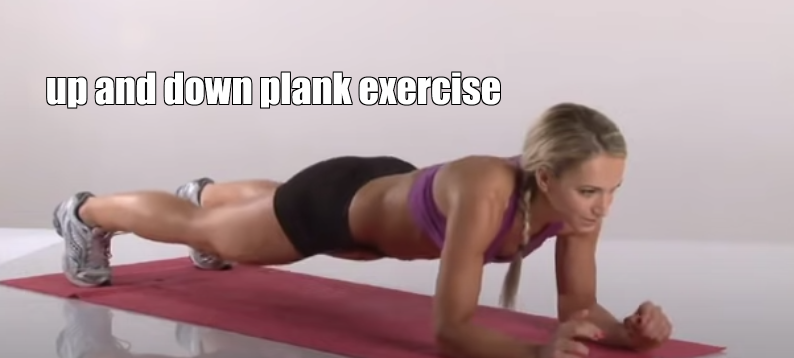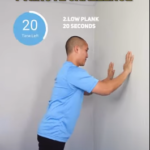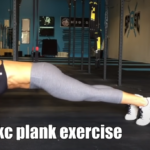Introduction to Up and Down Plank Exercise
In the ever-evolving landscape of fitness, the up and down plank exercise emerges as a formidable workout for enhancing core strength and stability. This dynamic movement, also known as plank up-downs, integrates the traditional plank’s benefits with the added challenge of movement, making it a full-body workout. This article delves into the nuances of the up and down plank exercise, its benefits, techniques, and variations, providing a comprehensive guide to mastering this powerful exercise.
Core Strength and the Plank Foundation
At the heart of the up and down plank exercise is the traditional forearm plank. This foundational pose is renowned for its effectiveness in building a strong, stable core, which is vital for overall fitness and injury prevention. The traditional plank targets the abdominals, lower back, and obliques, and it also engages the shoulders, chest, and legs. This comprehensive engagement makes it a staple in many fitness routines.
Read more: plank walls exercise
The Dynamic Twist of Up and Down Planks
What sets the up and down plank apart is its dynamic nature. This exercise involves transitioning from a forearm plank to a high plank (push-up position) and back, repeatedly. This movement not only intensifies the core workout but also increases heart rate, making it a cardiovascular challenge. Additionally, it demands more from the shoulders, arms, and chest, turning it into a full-body workout.
Benefits of the Up and Down Plank Exercise
The up and down plank exercise is a powerhouse of benefits. It significantly strengthens the core, enhancing stability and posture. This exercise improves balance and coordination, as maintaining form during the dynamic movement requires considerable focus and body control. It also helps in building endurance, both muscular and cardiovascular, and can contribute to a leaner waistline and overall body strength.
Proper Technique and Form
Mastering the technique is crucial for reaping the full benefits of the up and down plank exercise. Start in a forearm plank with your elbows under your shoulders, your body forming a straight line from head to heels. Engage your core and glutes to keep your body stable. Transition to a high plank by placing one hand at a time on the floor, extending your arms fully. Then, lower back down to the forearm plank, one arm at a time. The key is to keep your hips as stable as possible, avoiding swaying or lifting.
Incorporating Variations for Progression
As you become comfortable with the basic up and down plank, introduce variations to challenge yourself further. These can include increasing speed, adding leg lifts, or incorporating side planks. To intensify the exercise, try performing it on an unstable surface like a BOSU ball or a balance pad.
Integrating Up and Down Planks into Your Workout Routine
The up and down plank exercise can be seamlessly integrated into various workout regimes. It is an excellent addition to core training sessions, full-body workouts, or as part of a high-intensity interval training (HIIT) circuit. Beginners should start with shorter durations and fewer repetitions, gradually increasing as they build strength and endurance.
Safety and Precautions
While the up and down plank exercise is generally safe, it’s important to approach it with caution, especially for beginners or those with pre-existing conditions. Always warm up before the exercise and cool down afterward. Pay attention to any discomfort or pain in the shoulders or lower back, and consult a fitness professional if necessary.
Conclusion
The up and down plank exercise is a versatile, effective, and efficient workout that targets multiple muscle groups, enhancing core strength, stability, and overall fitness. Whether you’re looking to improve your athletic performance, build core strength, or simply add variety to your fitness routine, mastering the up and down plank can be a transformative experience. With its blend of strength and cardiovascular challenge, this exercise is a valuable addition to any fitness regimen.



